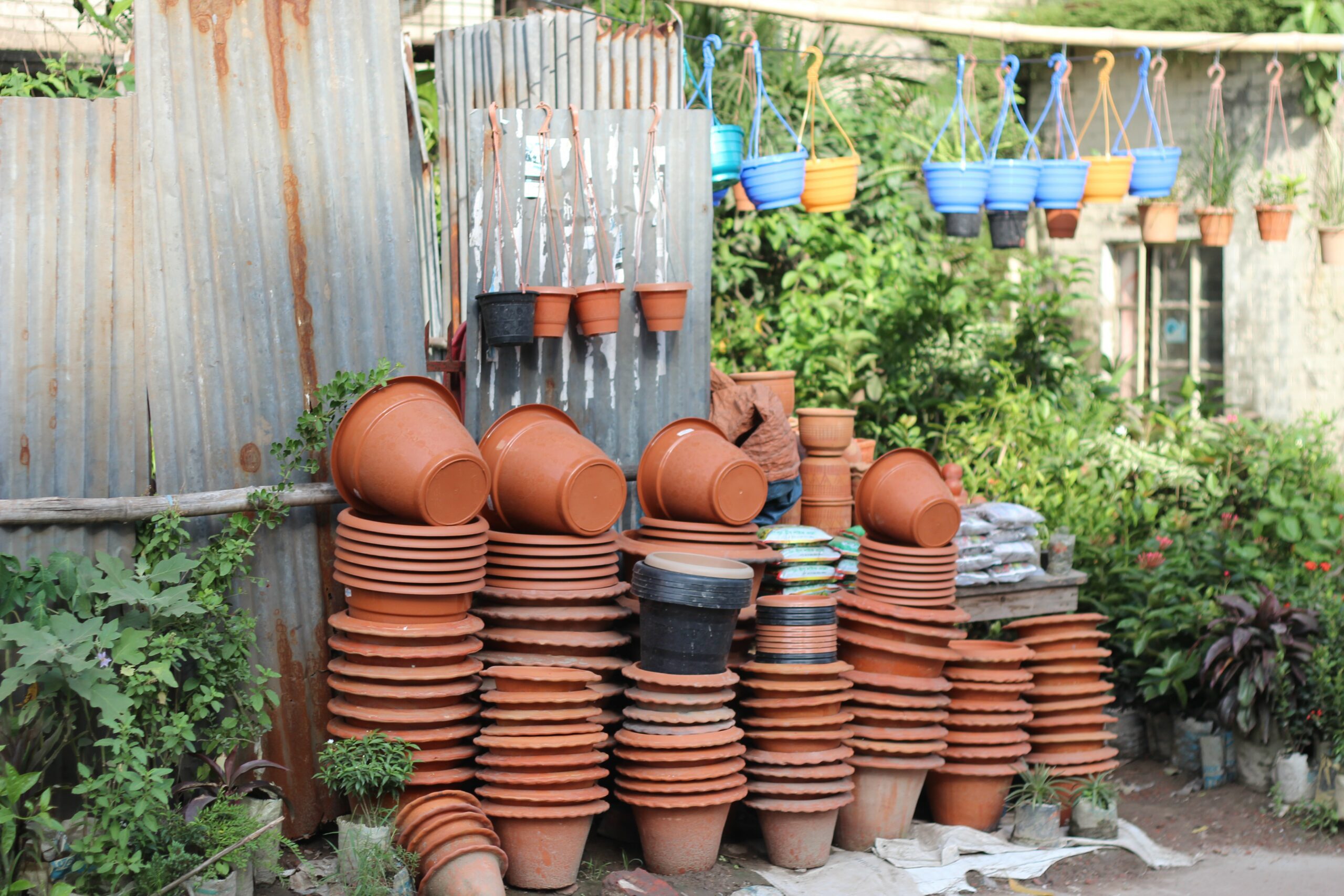Container gardening refers to the gardening practice of cultivating plants in pots, tubs, or other containers instead of directly in the ground or in raised beds.
Container gardening allows for food, flower, and herb production in locations where traditional gardens are not possible or accessible, including patios, balconies, decks, and sites with poor soil quality. They are a great option for renters, individuals with limited mobility, gardeners seeking to extend the growing season, and beginner gardeners looking to start their gardening practice gradually.
The portability of containers allows gardeners to choose micro-climates for each plant based on their preferred temperature and level of sunlight. Please refer to the instructions on the back of your seed packets for more information about the preferred micro-climate of your plant varieties.
Keep in mind that containers are more susceptible to high temperatures and moisture loss than traditional gardening arrangements. You can mitigate damage to your plants by watering the base of the plant only, checking water level daily, covering the soil with mulch, and, if necessary, using shade cloth to lessen the sunlight’s intensity.
When growing plants in containers, pay special attention to the type of soil that you use. Soil from garden beds or your yard is generally too dense for container gardening. Instead try a lightweight potting mix.
Most garden centers will carry general purpose potting mixes or mixes specifically designed for container gardening. Or create your own soil substitute for container gardening by mixing 3 parts organic compost, 3 parts peat moss or coconut coir, and 1 part vermiculite.
Plants grown in containers often need additional nutrients since potting mixes don’t provide the same nutritional profile as garden soil. Use an organic based fertilizer several times during the season.
Remember to always add mulch (such as straw, not wood chips) on top of your soil in containers to reduce moisture loss from intense Colorado sunlight.


Tips for choosing containers
- Use containers at least 8” in depth for all plant varieties other than herbs and lettuces, and much larger containers will be required for many plant varieties.
- In general, the larger the container, the better. More soil and space will allow plants to thrive and generate larger harvests.
- Always use containers with drainage holes on the bottom or drill drainage holes into containers that do not already have them.
- You can increase harvest yield for some plant varieties (such as potatoes) with specialized planters adapted to the unique features of certain plants.
Tips for selecting plant varieties
- Always select plants based on the amount of light available in your space. Refer to the back of seed packets for this information.
- Consider planting more than one plant variety together in a container. Companion gardening is most effective when you choose plants that have physical characteristics that aid each other’s growth. Common companion plants for container gardening include:
- Beans, Carrots, and Squash
- Eggplant and Beans
- Tomatoes, Basil, and Onions
- Lettuce and Herbs
- Companion plants should have a diversity of root depths to limit competition for water.
- Common shallow root plant varieties include: chives, lettuce, radishes, salad greens, basil, cilantro, beans, garlic, kohlrabi, onions, peas, mint, and thyme.
- Common deep root plant varieties include carrots, chard, cucumber, eggplant, fennel, leeks, peppers, spinach, parsley, rosemary, beets, broccoli, okra, potatoes, and summer squash.
- Most, but not all, plant varieties are adaptable to growing in containers. Common varieties that are generally not adaptable to container gardening include deep-root plants such as corn or sprawling plants with extra large yields like pumpkins and melons.
- Varieties with ‘Patio’ or ‘Dwarf’ in the title are container friendly.


Container gardening can be very resource intensive. You’ll need to acquire large containers and enough soil to fill them.
Tips for making container gardening cost effective
- Consider recycling existing containers such as buckets or tubs into plant containers. Make sure to thoroughly clean and disinfect recycled containers using chlorine free bleach before planting.
- Buy your soil and soil amendments in bulk rather than in bags.
- Order a seed, seedling, and educational resource kit through DUG’s pay-what-you-can with a free option annual program called Grow a Garden www.dug.org/growagarden.
- Get your seeds for free from DUG every spring in our office (1031 33rd St. St #100, Denver, CO 80205)!
____________________________________________________________
Sources:
- CSU Extension “Colorado Gardening: Challenge to Newcomers” Guide
- Dustin Wright of Living Earth Designs

